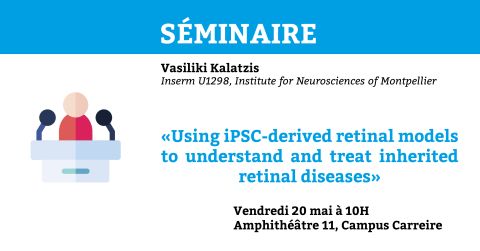"Using iPSC-derived retinal models to understand and treat inherited retinal diseases"
The advent of induced pluripotent stem cell (iPSC) technology has revolutionised biomedical research. The self-renewal capacity and multi-lineage differentiation potential of these cells allows the generation of iPSC-derived human tissues, which represent an important tool for disease modelling and therapeutic studies. One domain that has highly benefited from iPSC-technology is the study of inherited retinal diseases (IRDs). IRDs are a clinically and genetically heterogeneous group of disorders characterized by visual impairment due to dysfunction or degeneration of the light-sensing photoreceptors of the neuroretina and its underlying support tissue, the retinal pigment epithelium (RPE). The potential of iPSCs to recapitulate human retinal tissues by differentiating into an RPE monolayer or into 3D retinal organoids containing a layer of photoreceptors has led to the modelling of an array of IRDs as well as the testing of novel therapeutic strategies. I will present the generation and key morphological and/or functional aspects of such iPSC-derived retinal models. I will also show examples of the differential phenotypes of retinal models derived from IRD patients as compared to controls. Lastly, I will show the potential of iPSC-derived retinal organoids for proof-of-concept studies of therapeutic strategies, such as CRISPR/Cas9-mediated genome editing.


